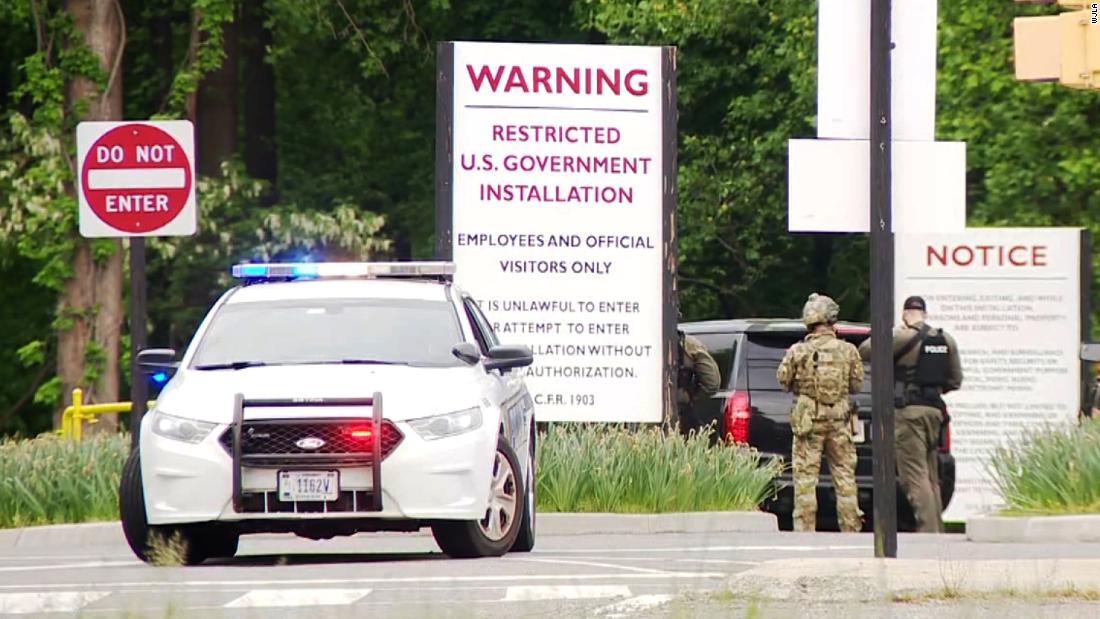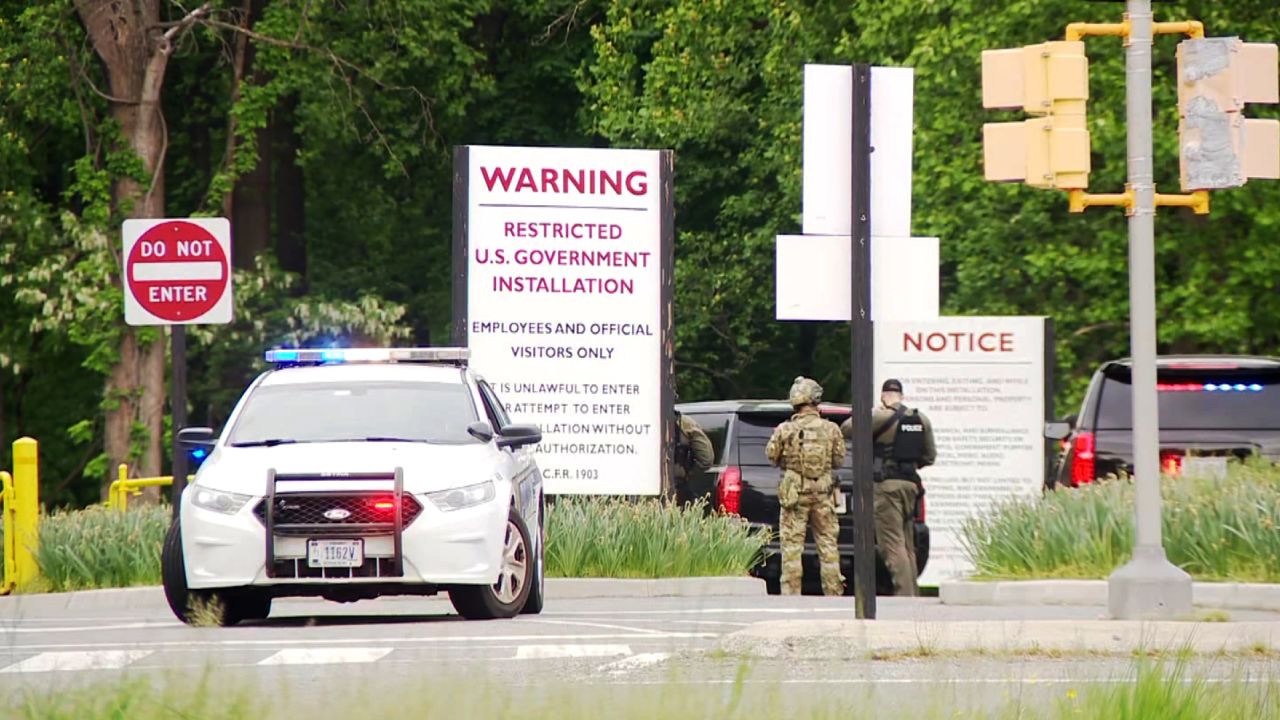A Tense Standoff At CIA Headquarters: Analysis And Implications
A high-stakes standoff unfolded at the CIA headquarters in McLean, Virginia, leaving residents and officials on edge as law enforcement worked diligently to resolve the tense situation. The incident, which spanned several hours, drew national attention and sparked discussions about security protocols and emergency response strategies. This event highlights the importance of understanding such critical situations and learning from them.
The standoff at the CIA headquarters in McLean is not merely a local news story but a significant event that impacts national security discussions. It emphasizes the need for enhanced communication and cooperation between law enforcement agencies and the community. A closer examination of the details reveals that such incidents play a crucial role in shaping public policy and security measures.
This article aims to provide an in-depth exploration of the events leading up to the standoff, the resolution process, and its broader implications. By analyzing the role of law enforcement, the strategies employed during the response, and the lessons learned, we can gain a deeper understanding of how such situations are managed and how they can be mitigated in the future.
Read also:San Jacinto County Wildfire A Comprehensive Guide To Causes Impact And Solutions
Exploring the Standoff at CIA Headquarters
The incident at the CIA headquarters in McLean began when an individual entered the facility under suspicious circumstances, prompting an immediate and robust response from security personnel. The situation escalated into a prolonged standoff that lasted for hours, capturing the attention of both local and national media. This section delves into the initial events that triggered the standoff and the subsequent actions taken by law enforcement to address the situation effectively.
Initial Response and Security Protocols
When an unauthorized person is detected at a high-security location like the CIA headquarters, predefined security protocols are activated to ensure the safety of personnel and the protection of classified information. In this case, the initial response included isolating the individual and establishing a secure perimeter to contain the situation. Security personnel swiftly alerted local law enforcement, initiated evacuation procedures for non-essential staff, and established communication channels with higher authorities to coordinate efforts.
- Security personnel immediately alerted local law enforcement agencies.
- Evacuation procedures were initiated for non-essential staff to ensure their safety.
- Communication channels with higher authorities were established to coordinate efforts effectively.
Unpacking the Participants in the Standoff
Understanding the individuals involved in the standoff is essential for analyzing the situation comprehensively. The suspect, whose identity remains undisclosed, was detained after a prolonged standoff lasting several hours. Authorities are currently investigating the motives and background of the individual to determine any potential security threats.
Profile of the Suspect
While specific details about the suspect remain classified, preliminary reports indicate that the individual had no prior criminal record. However, further investigation may uncover connections or affiliations that could shed light on the motives behind the intrusion. Below is a table summarizing the known information about the suspect:
| Attribute | Details |
|---|---|
| Name | Not disclosed |
| Age | Approximately 30 years |
| Background | No known criminal history |
| Motives | Under investigation |
Law Enforcement's Critical Role in Resolving the Standoff
The resolution of the standoff at the CIA headquarters in McLean stands as a testament to the effectiveness of law enforcement's tactical operations and negotiation skills. Coordinated efforts between local police and federal agencies ensured a peaceful resolution without any casualties, showcasing the importance of teamwork and strategic planning in high-stakes situations.
Tactical Operations and Negotiation Strategies
Law enforcement utilized a combination of tactical operations and negotiation strategies to de-escalate the situation effectively:
Read also:Canadas Rising Soccer Stars A Deep Dive Into Their Nations League Journey
- Tactical teams established secure positions around the perimeter to maintain control of the situation.
- Negotiators engaged in direct communication with the suspect to build trust and encourage a peaceful surrender.
- Psychological profiling was employed to understand the suspect's mindset and potential triggers, aiding in the negotiation process.
Broader Implications of the Standoff
The standoff at the CIA headquarters in McLean raises important questions about security measures and emergency response protocols. It serves as a reminder of the importance of preparedness and adaptability in high-stakes situations. This section examines the broader implications of the event and its impact on national security policies.
Revisiting and Enhancing Security Protocols
In light of the incident, there is a growing call to revisit and enhance security protocols at sensitive government facilities:
- Increased surveillance and monitoring systems to detect and respond to threats more effectively.
- Regular training exercises for security personnel to maintain readiness and improve response times.
- Improved communication channels between different law enforcement agencies to ensure seamless coordination during emergencies.
Public Perception and Media Coverage
The standoff at the CIA headquarters in McLean garnered significant media attention, with news outlets providing live updates and expert analyses. The public reaction was mixed, with some expressing concern over security lapses while others praised the swift response of law enforcement. This section explores the media's role in shaping public perception and the challenges of reporting on sensitive incidents.
Media's Influence on Public Perception
The media played a crucial role in shaping public perception of the event by providing timely and accurate information. However, it also highlighted the challenges of reporting on sensitive incidents without compromising operational security or causing unnecessary public panic.
Lessons Gleaned from the Standoff
Every critical incident offers an opportunity to learn and improve. The standoff at the CIA headquarters in McLean provides valuable lessons for enhancing security measures and emergency response strategies. By analyzing the successes and shortcomings of the operation, we can identify areas for improvement and implement changes to prevent similar incidents in the future.
Key Takeaways from the Incident
- Effective communication between agencies is vital for successful operations and resolving crises efficiently.
- Regular training and drills are essential for maintaining readiness and ensuring that security personnel are prepared for various scenarios.
- Community engagement can play a crucial role in preventing similar incidents by fostering trust and cooperation between law enforcement and the public.
Strategic Steps to Enhance Security
Based on the lessons learned from the standoff, several strategic steps can be taken to enhance security at government facilities:
Technological Innovations in Security
Investing in advanced technology can significantly improve security measures:
- Implementation of AI-driven surveillance systems to detect and respond to threats in real-time.
- Integration of biometric authentication for access control to enhance security and reduce the risk of unauthorized access.
- Development of real-time threat detection systems to provide early warnings and enable proactive responses.
Final Thoughts
The standoff at the CIA headquarters in McLean serves as a stark reminder of the challenges faced by law enforcement and security personnel in protecting sensitive facilities. Through effective communication, coordinated efforts, and strategic planning, the situation was resolved peacefully. However, it underscores the need for continuous improvement in security protocols and emergency response strategies to ensure the safety of critical infrastructure and the public.
We invite you to share your thoughts and insights on this event in the comments section below. Your feedback is invaluable in helping us understand different perspectives and contribute to a safer community. Additionally, explore our other articles to stay informed about the latest developments in national security and emergency preparedness.
Table of Contents
- Exploring the Standoff at CIA Headquarters
- Unpacking the Participants in the Standoff
- Law Enforcement's Critical Role in Resolving the Standoff
- Broader Implications of the Standoff
- Public Perception and Media Coverage
- Lessons Gleaned from the Standoff
- Strategic Steps to Enhance Security
- Final Thoughts


